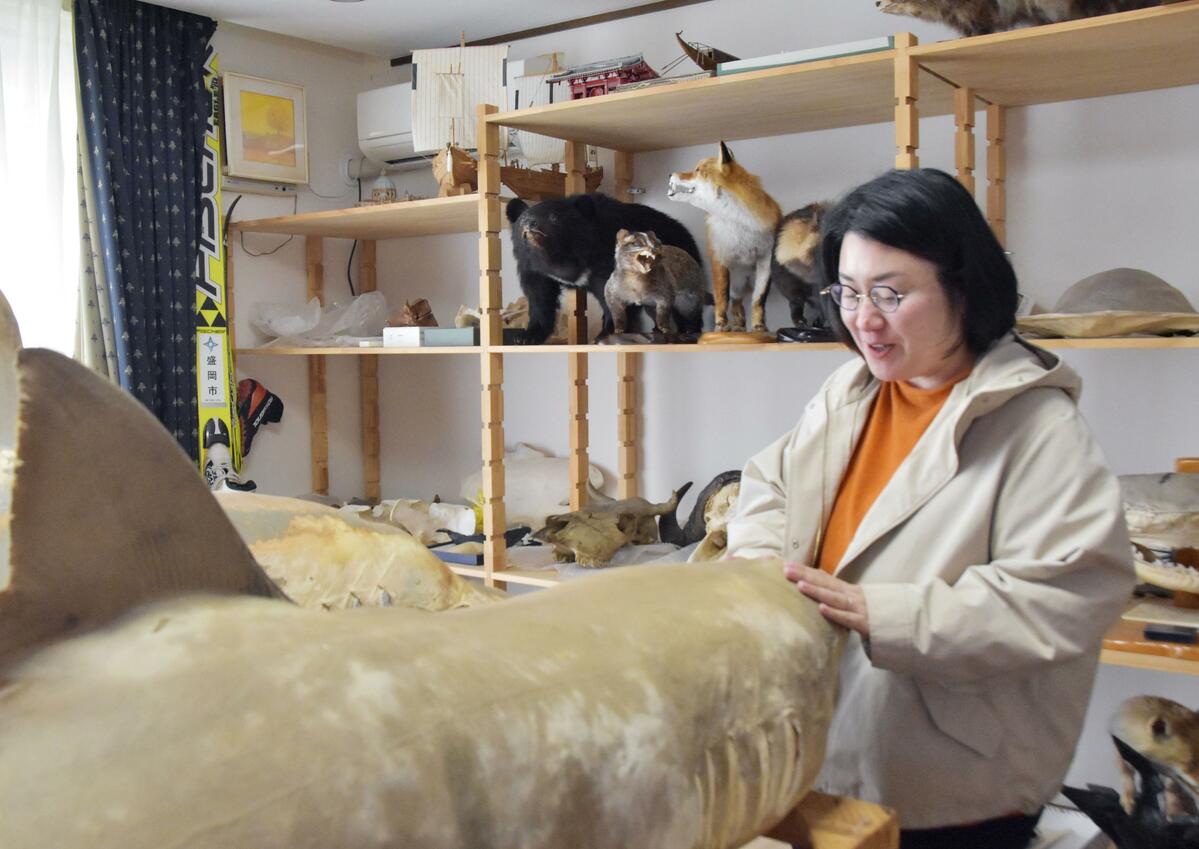Copyright kyodonews

MORIOKA, Japan - The northeastern Japanese city of Morioka is home to an unusual, privately run small museum where visitors are encouraged to do what is normally forbidden -- touch the exhibits. The museum draws visually impaired visitors from across Japan, inviting guests to explore every exhibit through touch, turning imagination into hands-on discovery. "My goal is to create a place where visually impaired visitors can make new discoveries no matter how many times they come," said the museum's director, Wakana Kawamata. Inside the 165-square-meter exhibition room, located on the second floor of Kawamata's family home, lifelike lions, sharks, and peacocks are lined up. Unlike in conventional museums, Kawamata personally selects items tailored to each visitor's interests and provides explanations. Visits are by reservation only, with a maximum of two groups per day, yet the museum still welcomes about 450 guests annually. This individualized approach is part of the appeal. Fans of period dramas can handle Edo-era "shuriken" (throwing blades) and writing sets, while architecture enthusiasts can explore replicas of World Heritage buildings. The museum was founded in 1981 by the late Masataro Sakurai, a blind teacher at what was then the prefectural school for the blind, to fulfill visually impaired people's "desire to learn." Using his own funds, he collected and even crafted specimens, building a collection that now numbers around 3,000 pieces. The museum closed in 2010 when Sakurai's health declined. At the time, Kawamata was working in Tokyo, but after visiting, she felt compelled to continue his mission. "There was no way I could let this place go," Kawamata said. She took over in 2011 and reopened the museum in its current location. Most visitors today are in their 60s to 80s. Through conversations, Kawamata realized that while many have extensive knowledge, they often lack firsthand experience. One visitor, after touching a stuffed sea otter, exclaimed, "I always thought it was a fish. I can't believe it has legs." Another assumed that fish packaged in supermarkets showed how they naturally swam. Such moments "made me realize that maybe there are more people with visual impairments that have lived their lives swallowing their doubts than I first thought," Kawamata says. To help bridge those gaps, the museum now arranges exhibits side by side: raccoon dogs beside foxes, models of elephants placed next to giraffes. The goal is to let visitors compare and form accurate images. "I want them to understand what they learn here so clearly that they can explain it to others in their own words." Equally important is creating a space where people feel comfortable talking. Kawamata begins each visit by asking about the degree of disability, a practice she once worried might seem intrusive. But visitors welcomed it. She was told that it was fine to ask anything so long as she was trying to understand. That openness reflects the museum's guiding philosophy. "Let's not pretend to understand -- let's listen to each other," Kawamata says. With that approach, the modest upstairs museum continues to thrive, offering tactile experiences, personal connection, and a place where learning is both accessible and meaningful.



